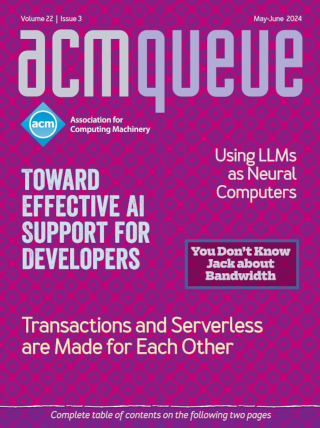
Java in a Teacup:
Programming Bluetooth-enabled devices using J2ME
Few technology sectors evolve as fast as the wireless industry. As the market and devices mature, the need (and potential) for mobile applications grows. More and more mobile devices are delivered with the Java platform installed, enabling a large base of Java programmers to try their hand at embedded programming. Unfortunately, not all Java mobile devices are created equal, presenting many challenges to the new J2ME (Java 2 Platform, Micro Edition) programmer. Using a sample game application, this article illustrates some of the challenges associated with J2ME and Bluetooth programming.
TiVo-lution:
The challenges of delivering a reliable, easy-to-use DVR service to the masses
One of the greatest challenges of designing a computer system is in making sure the system itself is "invisible" to the user. The system should simply be a conduit to the desired result. There are many examples of such purpose-built systems, ranging from modern automobiles to mobile phones.
Kode Vicious Bugs Out:
What do you do when tools fail?
This month Kode Vicious serves up a mixed bag, including tackling the uncertainties of heisenbugs -- a nasty type of bug that’s been known to drive coders certifiably insane. He also gives us his list of must-reads. Are any of your favorites on the list? Read on to find out!
The (not so) Hidden Computer:
The growing complexity of purpose-built systems is making it difficult to conceal the computers within.
Ubiquitous computing may not have arrived yet, but ubiquitous computers certainly have. The sustained improvements wrought by the fulfillment of Moore’s law have led to the use of microprocessors in a vast array of consumer products. A typical car contains 50 to 100 processors. Your microwave has one or maybe more. They’re in your TV, your phone, your refrigerator, your kids’ toys, and in some cases, your toothbrush.
Evolution or Revolution?:
Where is the High in High Tech?
We work in an industry that prides itself on "changing the world," one that chants a constant mantra of innovation and where new products could aptly be described as "this year’s breakthrough of the century." While there are some genuine revolutions in the technology industry, including cellphones, GPS (global positioning system), quantum computing, encryption, and global access to content, the vast majority of new product introductions are evolutionary, not revolutionary. Real technical breakthroughs are few and far between. Most new products are just a recycling of an earlier idea.
A Conversation with Chuck McManis:
Developing systems with a purpose: do one thing, and do it well.
When thinking about purpose-built systems, it’s easy to focus on the high-visibility consumer products: the iPods, the TiVos. Lying in the shadows of the corporate data center, however, are a number of less-glamorous devices built primarily to do one specific thing: and do it well and reliably.





